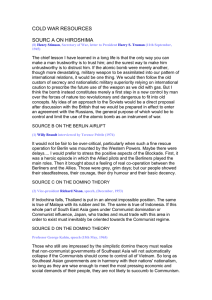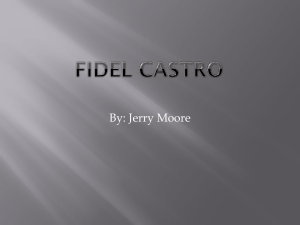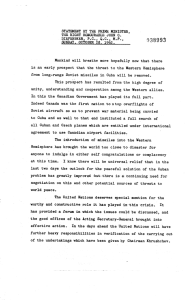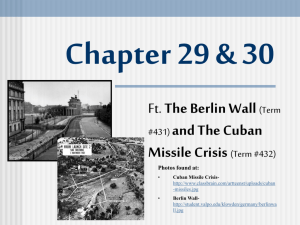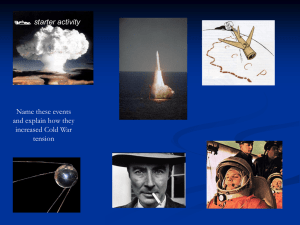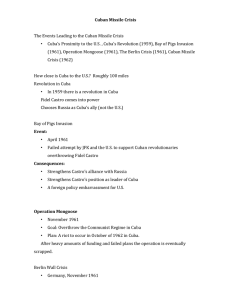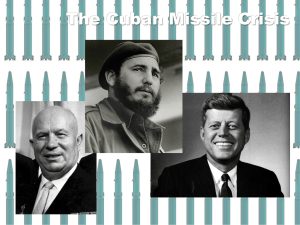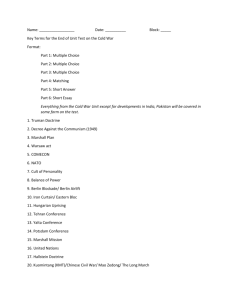Cuban Missile Crisis
advertisement
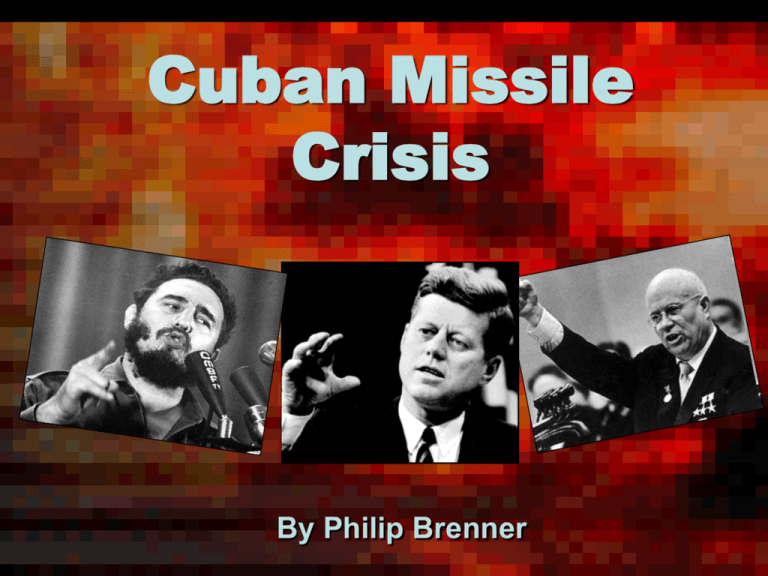
Cuban Missile Crisis By Philip Brenner CIA Briefing Map Meeting of the ExComm October 16, 1962 U-2 Photo of Missile Site, October 14, 1962 Missile Warhead ExComm Deliberation During the Crisis Letter from Nikita Khrushchev to John F. Kennedy, October 26, 1962 Black Saturday – Second Letter Black Saturday Low-level reconnaissance of Cuban antiaircraft sites U.S. Lessons • Crises can be managed ─ Secrecy ─ Small group with open discussion ─ Exclude and misinform Congress and public • Steel Will (“Eyeball to Eyeball”) ─ Toughness ─ Resolve • Superior Strength ─ Build up Military ─ Exercise Coercive Diplomacy Problems with US Lessons First Cut • Crises cannot be managed • Flexibility, not steel will, saved us • Force or threat of force precipitated the crisis, made it more dangerous US Misconstrues Soviet Motives Summit in Vienna Austria, June 1961 Berlin Wall Erected, August 1961 Jan. 3, 1961 Bay of Pigs The next day, 1,500 U.S. trained Cuban exiles landed on Cuba with weapons supplied by the United States. Richard Goodwin Meets Ché Guevara ●●● ●●● Operation Mongoose Memorandum from Gen. Lansdale to Special Group (Augmented) -- Pg 1 Gen. Lansdale Memorandum (Continued) -- Pg 2 Operation Anadyr In July 1962 the Soviet Union began to send ballistic missiles, other weapons and soldiers to Cuba. The build-up troubles US military planners, even as they conclude that ballistic missiles are not being installed. New York Times October 23, 1961 ... Soviet Union responds by exploding a 50-megaton hydrogen bomb in the atmosphere, Oct 30, 1961 White House Statement Problems with US Lessons Second Cut • Crisis management Groupthink and exclusion of information • Steel will inflexibility and no negotiations; force becomes only alternative • Coercive diplomacy military build-up; ignores factors such as patriotism Soviet Lessons • Crises cannot be managed • Crises must be prevented – Improve communications with the other superpower – Achieve parity (equal military force) with US President Kennedy’s American University Speech June 10, 1963 Cuban Lessons • Neither superpower can be trusted • Cuba must defend itself with asymmetric warfare – Support revolution in Third World – Strengthen military forces – Intensify internal security Castro’s Five Demands • Cessation of the US economic embargo and US pressure on other countries to cut commercial links to Cuba; • End US subversive activities against Cuba, including the “organization of invasions by mercenaries” and “infiltration of spies and saboteurs” • Cease “piratical attacks” from bases in the United States and Puerto Rico • End violations of Cuban airspace • US withdrawal from Guantanamo Naval Base Anastas Mikoyan Arrives in Cuba IL-28 Bomber (Bulgarian model in Cuba) How Castro Remembered Mikoyan’s Visit -- From: James Blight and Philip Brenner, Sad and Luminous Days OSPAAL: Organization of Solidarity of the Peoples of Africa, Asia and Latin America Cuban Missile Caribbean October Crisis

